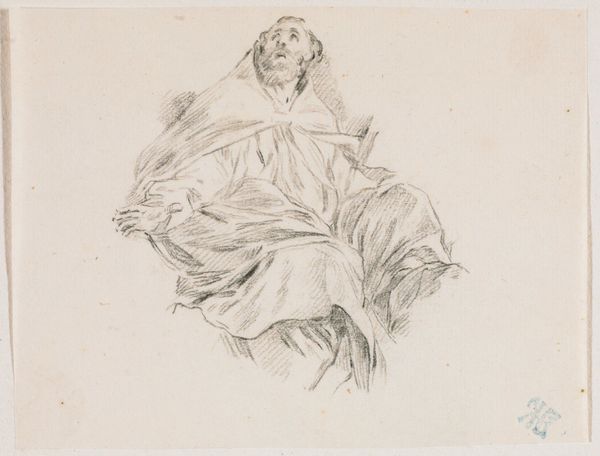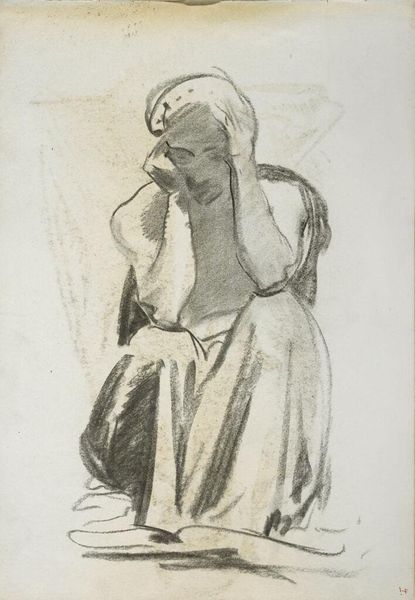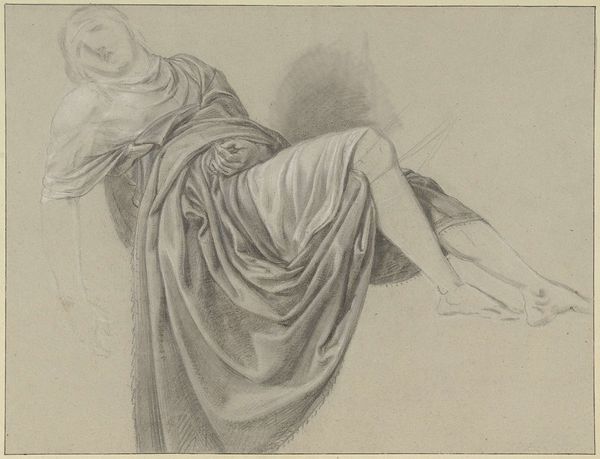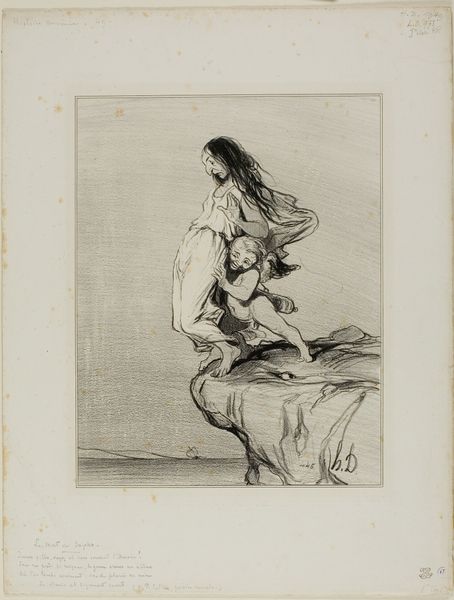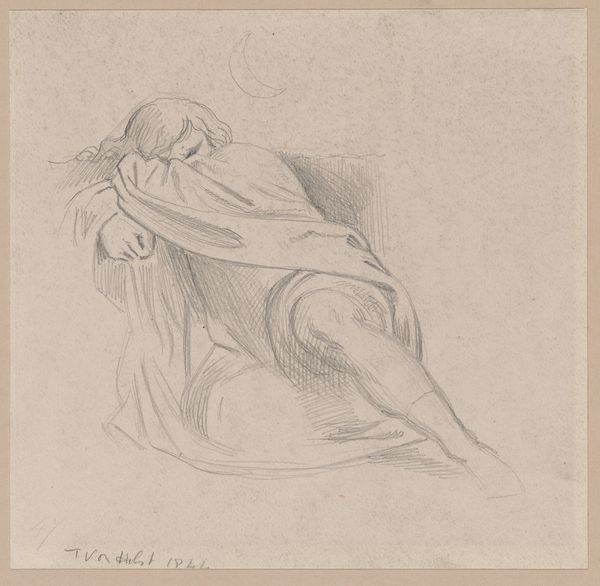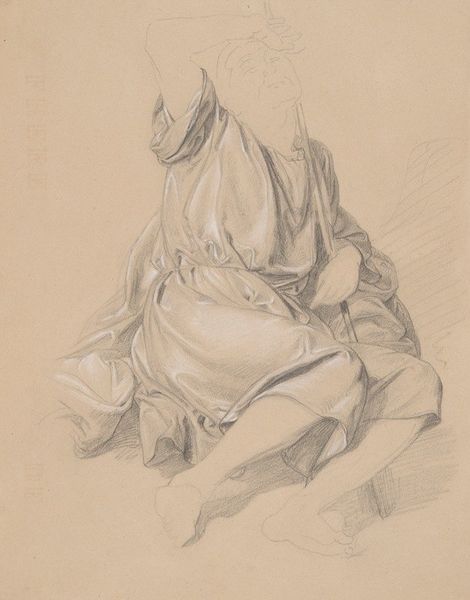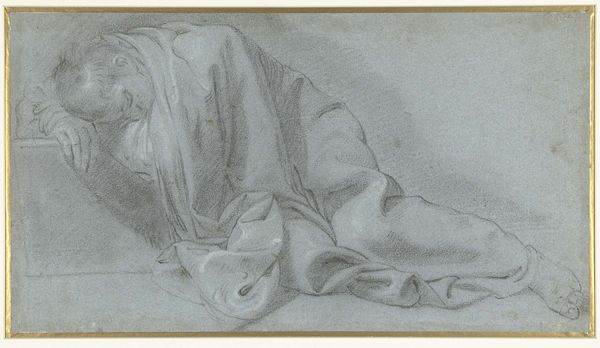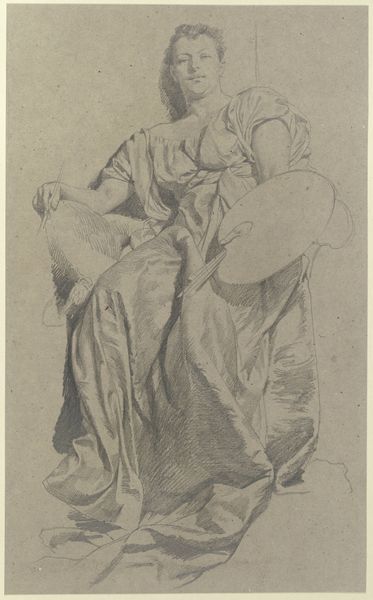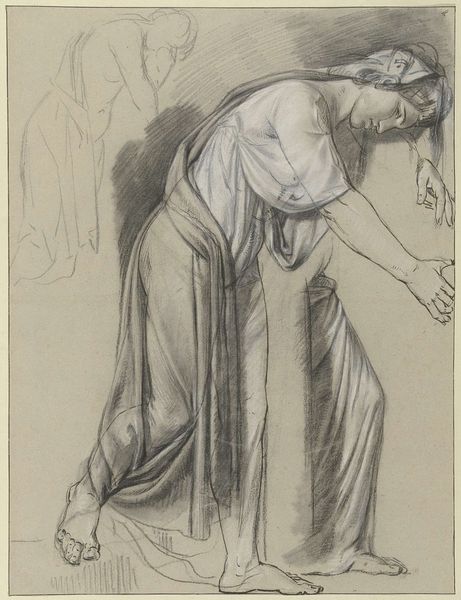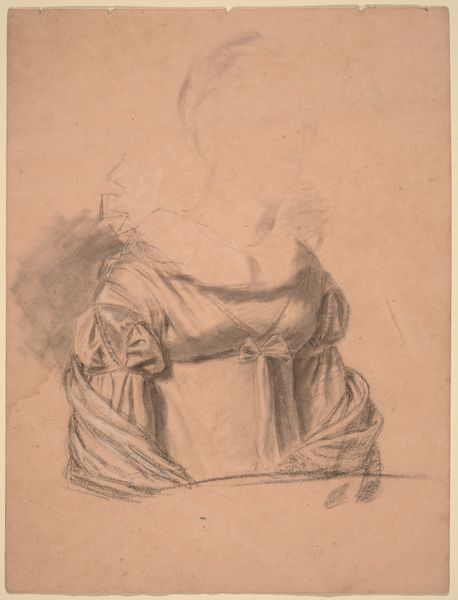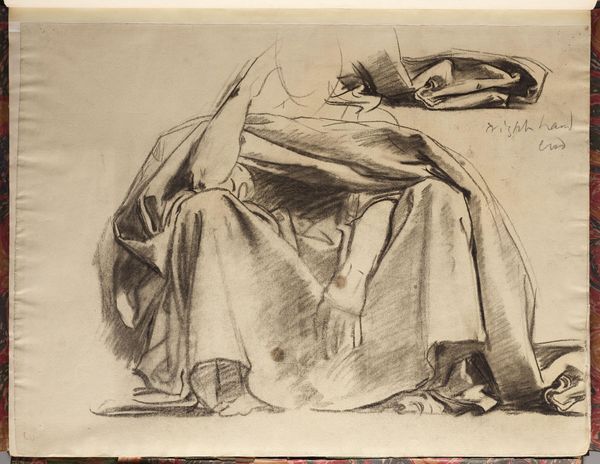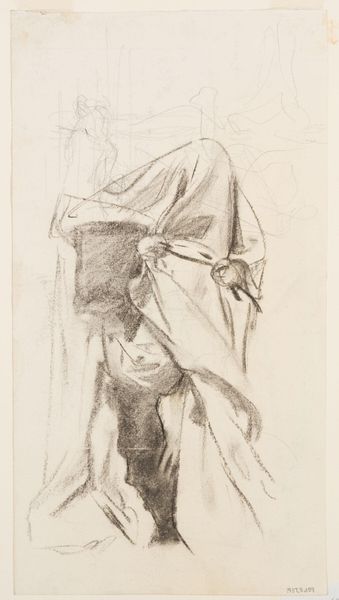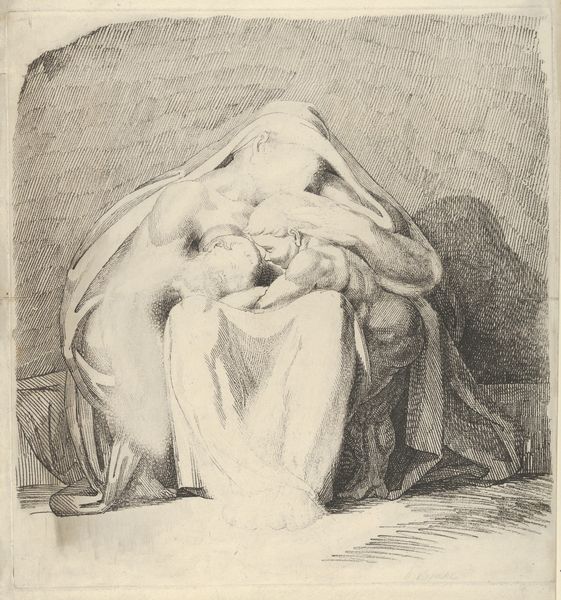
drawing, pencil
portrait
drawing
charcoal drawing
pencil drawing
pencil
portrait drawing
history-painting
academic-art
Copyright: Public Domain: Artvee
Curator: John Singer Sargent's "Study for 'Astronomy'," from around 1921, really captivates, doesn't it? What’s your first take? Editor: Hmm, ethereal, and mournful, like a veiled figure searching the night sky. All pencil and charcoal? Curator: Indeed. Sargent employed graphite and charcoal here. Knowing him, the rapid execution underscores an academic exercise in form, draping, perhaps a nod to classical sculpture reworked into a modern aesthetic. It’s almost as if he's mapping out emotional territories as much as sketching constellations. Editor: Precisely! The celestial element is intriguing; Sargent used it as backdrop to a kind of studio practice. Think of the social history of drawing as something students of Astronomy—women students likely—would do, copying images and diagrams… it renders the night sky as both scientific subject and an artistic prop. Curator: Absolutely, considering its intended place as a study piece, it carries an undeniable gravity that surpasses preliminary work, blurring boundaries and questioning finish. The sitter's pose itself contributes to the drama; a figure on her knees— Editor: The act of kneeling suggests a power dynamic; is she subservient to knowledge, to science, or pleading to an unresponsive firmament? It complicates her gesture in really interesting ways, but it starts from his deployment of rather common artistic material—graphite on paper. It allows for changes and the ghosting effects that charging reveals. Curator: The raw materiality grounds the spiritual aspiration, keeping it earthy. What fascinates me most is Sargent's rendering of light within this graphite world—it creates depth. Do you think his technical ability overshadows other interpretative dimensions? Editor: I think to separate the 'technical' from interpretive is a false division; the social dimensions of accessing quality drawing implements, the price of paper, these determined what was achievable, by whom, and what that image could then mean to audiences that range far from Sargent's elite social standing. The real craft is how such an ordinary medium elevates a practice drawing into something profound. Curator: A humbling thought. Sargent offers not just technical showmanship, but opens channels for profound social and spiritual queries. Thank you. Editor: Yes, it is precisely in the everyday that these grand visions materialize. It changes how we frame material culture, doesn’t it?
Comments
No comments
Be the first to comment and join the conversation on the ultimate creative platform.
